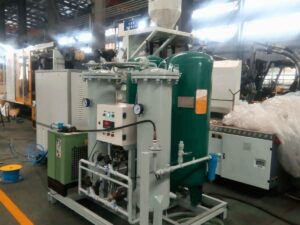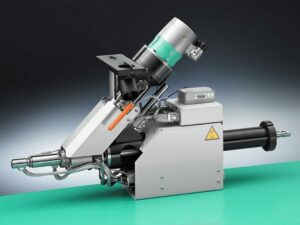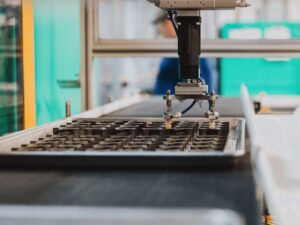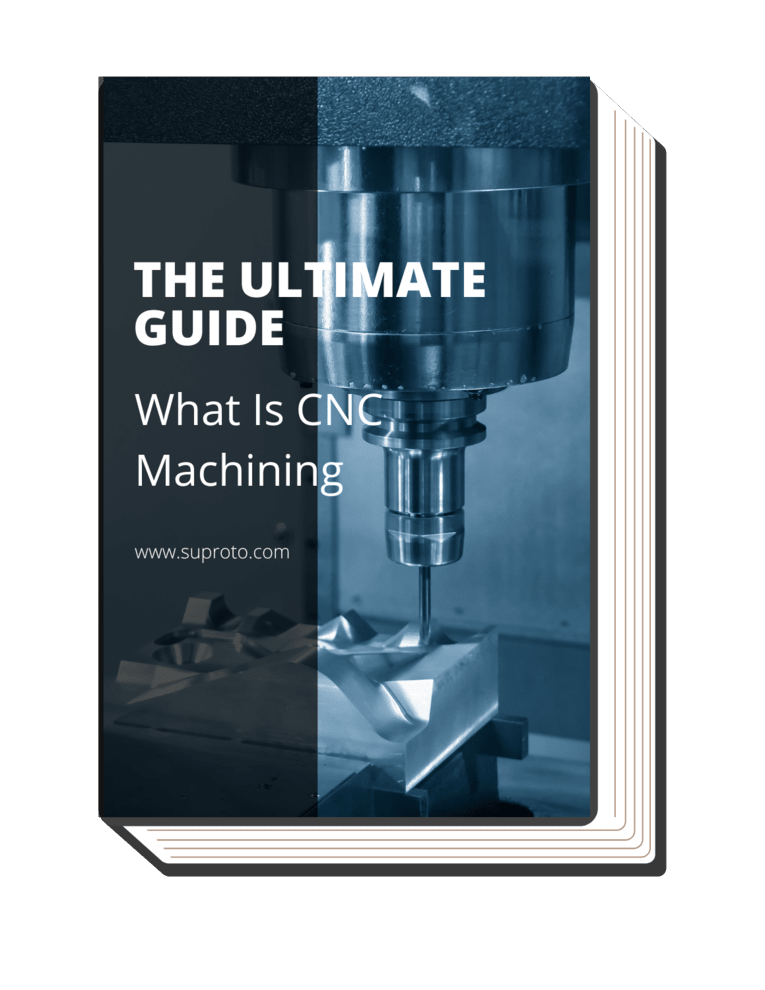Ever wondered how we get intricately designed plastic parts in high volumes? The answer lies in the field of Plastic Injection Molding. As a specialist in this industry, I can assure you that there’s much more to it than meets the eye. Over the years, sourcing this service from China has become increasingly complex due to a number of factors including costs, quality control, and delivery time.
In this article, we’ll delve deep into understanding the ins and outs of plastic injection molding services in China, and provide you with all the information you need to make an informed decision.
Stay with us and you’ll learn what plastic injection molding is, the different types, the history and benefits of the service in China, and much more.
1. Defining Plastic Injection Molding
Plastic injection molding is a popular manufacturing process where parts are made by injecting molten plastic into a mold. Now, this is important. The process begins with the melting of plastic pellets, which are then injected under pressure into a mold cavity. Once cooled and solidified, the desired plastic part is ejected from the mold.
According to Custom Engineered Wheels, the global injection molded plastics market size was valued at USD 265.1 billion in 2020 and is expected to expand at a compound annual growth rate (CAGR) of 4.6% from 2021 to 2028. Here’s the interesting part. The numbers speak for themselves – this process is integral to many industries around the world.
2. History of Plastic Injection Molding in China
China’s journey in plastic injection molding has been marked by exponential growth and development. The country’s rapid industrialization in the 1980s paved the way for advancements in plastic injection molding technologies. Here are the historical milestones that shaped the trajectory of this industry:
The Early Years
The genesis of plastic injection molding in China can be traced back to the late 1970s and early 1980s. And here’s the bottom line, with China embracing globalization, the need for efficient and cost-effective manufacturing solutions escalated, becoming more than just a necessity—it became a catalyst for industrial evolution.
The Boom
Fast forward to the late 1990s and early 2000s, this period ushered in a significant boom in the plastic injection molding industry in China. Spurred by demand from domestic and global automotive and electronics sectors, the industry saw rapid growth. According to MPDI, in the 21st century, a great percentage of plastic industry production is associated with both injection molding and extrusion processes.
Modern Era
The modern era is characterized by innovation, efficiency, and stringent quality standards. In my experience as a manufacturer, witnessing this evolution has been nothing short of inspiring. Today, with advanced tech and eco-friendly methods, China’s plastic injection molding thrives globally. China’s commitment to technological innovation and global trends solidifies its leadership in the global plastic injection molding industry.
3. Benefits of China’s Plastic Injection Molding Services
When sourcing plastic injection molding services, there are numerous advantages that make China an attractive option. Below are the benefits of China’s plastic injection molding services that make it a top choice for businesses:
High Production Capacity
Chinese manufacturers are renowned for their exceptional production capacity. They are equipped with extensive infrastructure and a robust workforce, capable of managing sizeable orders with remarkable efficiency. So what’s my point? For instance, a well-established factory has the potential to churn out millions of components weekly.
Cost-Effectiveness
A prominent benefit of sourcing from China is the unmatched cost-effectiveness. At Suprotos, we’re committed to offering superior quality services without straining the budget. The operational expenses in China are typically less steep compared to other regions, allowing us to provide cost-efficient services without compromising on quality.
Superior Quality
Chinese manufacturers have truly excelled in their pursuit of quality assurance. Here’s why that’s important. Today’s state-of-the-art factories in China boast cutting-edge machinery and automated systems, designed to guarantee production of the highest quality, while minimizing defects to virtually negligible levels. This advancement has greatly enhanced the global perception of Chinese manufacturing.
4. Types of Plastic Injection Molding Techniques
There are several techniques in the plastic injection molding process. Each method offers unique advantages depending on the design and requirements of the plastic part. Let’s explore some of the commonly used techniques:
Liquid Injection Molding
Liquid injection molding (LIM) is a technique used to produce parts using liquid silicone rubber (LSR). The LSR is injected into a heated mold, which then cures to form the desired part. You don’t want to miss this next part. This method is favored for its ability to create precise, intricate parts with excellent thermal, chemical, and electrical resistance.
Gas-Assisted Injection Molding
Gas-assisted injection molding involves injecting pressurized gas, typically nitrogen, into the mold cavity along with the plastic material. This technique helps eliminate sink marks, reduce cycle time, and improve part strength. It is often employed for complex and larger parts. At Suprotos, we have extensive experience in utilizing gas-assisted injection molding to achieve optimal part quality and performance.
Micro Injection Molding
Micro injection molding is used to manufacture small, intricate parts with high precision and tight tolerances. It involves injecting a small amount of molten plastic into a tiny mold cavity using specialized equipment and techniques. I’m sure you’re with me on this one. This technique is commonly employed in industries such as medical devices, electronics, and automotive, where miniature components are required.
Metal Injection Molding
Metal injection molding (MIM) combines the versatility of plastic injection molding with the strength and durability of metal. Fine metal powders are mixed with a binder material to create a feedstock, which is then injected into a mold cavity and subsequently sintered to remove the binder and achieve the final metal part. MIM allows for the production of complex, high-density metal parts with excellent dimensional accuracy.
5. Raw Materials Used in Plastic Injection Molding
Different materials can be used in plastic injection molding depending on the functionality and requirements of the final product. Plastic injection molding utilizes different types of raw materials to create a wide range of plastic parts. Let’s explore some of the commonly used materials:
Thermoplastics
These thermoplastics are the most commonly used materials in plastic injection molding. They possess the unique property of melting when heated and hardening when cooled, allowing for the process to be repeated multiple times. For instance, materials like polyethylene find wide applications in various industries, ranging from packaging to automotive components, due to their versatility and excellent properties.
Thermosetting Plastics
Thermosetting plastics are another category of materials used in plastic injection molding. Unlike thermoplastics, thermosetting plastics undergo a chemical change during the curing process and can not be re-melted or reshaped once they have been set. But guess what I realized just in the nick of time. Once heated and cured, they retain their shape and solidify permanently.
Elastomers
Elastomers, also known as rubber-like materials, possess unique properties of high elasticity and flexibility. They can undergo significant deformation and then return to their original shape. Here’s what we found instead: Elastomers used in plastic injection molding include silicone rubber, neoprene, and nitrile rubber, which offer exceptional resilience and are widely utilized in various applications requiring effective sealing, cushioning, or vibration damping.
6. Chinese Plastic Injection Molding Industries
China’s plastic injection molding industry has established a strong presence in these sectors, providing high-quality, cost-effective, and efficient manufacturing solutions. China’s plastic injection molding industry serves a wide range of sectors, including:
Automotive Industry
The automotive industry heavily relies on plastic injection molding to manufacture a wide range of essential parts. These parts include dashboards, bumpers, fluid reservoirs, and much more. Plastic injection molding ensures high-quality standards, cost-effectiveness, and efficient production in the automotive industry. At Suprotos, we’ve helped numerous automotive clients produce high-quality plastic components.
Electronics Industry
The electronics industry heavily relies on plastic injection molding for the production of components used in devices such as smartphones, laptops, tablets, and other electronic gadgets. But wait, there’s more, from intricate casings and bezels to connectors and buttons, plastic injection molding enables the efficient and precise manufacturing of these parts, ensuring the seamless integration of technology and design. The table provides an overview of the components in the electronics industry that heavily rely on plastic injection molding for efficient and precise manufacturing.
| Component |
Description |
| Smartphone |
Plastic injection molding is used to produce various components of smartphones, such as casings, bezels, connectors, buttons, and internal structural parts. These components are crucial for the overall functionality and aesthetic appeal of smartphones. |
| Laptop |
Plastic injection molding is utilized in the production of laptop components, including casings, frames, keyboard keys, touchpad buttons, and other structural elements. It enables the creation of lightweight yet durable parts that enhance the overall user experience. |
| Tablet |
The electronics industry relies on plastic injection molding to manufacture tablet components like casings, frames, buttons, connectors, and internal support structures. This process ensures the precision and consistency required for tablet assembly. |
| Electronic Gadgets |
Various electronic gadgets, such as gaming consoles, smartwatches, fitness trackers, and portable speakers, benefit from plastic injection molding. It enables the production of intricate and precise components, ensuring optimal functionality and appealing designs. |
Medical Equipment Industry
In the medical equipment industry, plastic injection molding plays a vital role in producing various components and devices. From syringe barrels and IV connectors to surgical instruments and diagnostic equipment, plastic injection molding ensures the manufacturing of precise, sterile, and high-quality medical products. And on top of that, China’s plastic injection molding industry is trusted for its strict quality standards in medical equipment.
Consumer Goods Industry
The consumer goods industry covers a wide range of products, from household items to toys and personal care products. Plastic injection molding is a key manufacturing method for producing plastic components in this industry. It allows for mass production of items with consistent quality, affordability, and versatility. China’s plastic injection molding serves the diverse consumer goods industry, from kitchenware to toys and packaging.
7. 4 Considerations When Selecting a Chinese Plastic Injection Molding Service
Choosing the right Chinese plastic injection molding service provider requires careful consideration and evaluation. China’s plastic injection molding industry serves diverse sectors, encompassing:
#1 Identifying Your Specific Needs
Before starting the search, it’s crucial to clearly identify specific needs. For instance, factors such as materials, design requirements, and project volume significantly impact the choice of a suitable service provider. Assessing and articulating requirements ensures a successful partnership with a plastic injection molding service that aligns with unique project needs.
#2 Researching and Evaluating Potential Service Providers
Thoroughly researching and evaluating potential service providers is crucial. Consider factors such as their experience, reputation, customer reviews, and track record. Requesting samples or visiting their facilities can provide insights into their capabilities and quality of work. In like manner, comparing quotes aids in informed decision-making.
#3 Quality Certifications and Compliance with International Standards
Ensure that the chosen plastic injection molding service holds relevant quality certifications, such as ISO 9001, ISO 13485 (for medical devices), or IATF 16949 (for automotive). These certifications indicate the service provider’s commitment to maintaining quality management systems and adherence to industry standards. Verify compliance with industry-specific international standards to ensure high-quality part production.
#4 Communication and Customer Service
Effective communication and excellent customer service are essential in any business relationship. But that’s not all, choose a plastic injection molding service that demonstrates clear and prompt communication, provides regular project updates, addresses queries, and offers responsive support throughout the process. Open and transparent communication fosters a productive partnership with the service provider.
Conclusion
In conclusion, with the right information, navigating plastic injection molding services in China is manageable. This guide covers plastic injection molding in China, including its history, benefits, techniques, materials, and industries. But wait, there’s more, armed with this knowledge, you can confidently explore opportunities and make informed decisions for your business.
Whether you’re in the automotive, electronics, medical, or consumer goods industry, plastic injection molding services in China offer substantial benefits. Suprotos, as a seasoned manufacturer, is equipped with the expertise and resources to deliver top-notch plastic injection molding services. We invite you to reach out to us to discuss your project needs. By partnering with us, you’re choosing quality, efficiency, and reliability.






